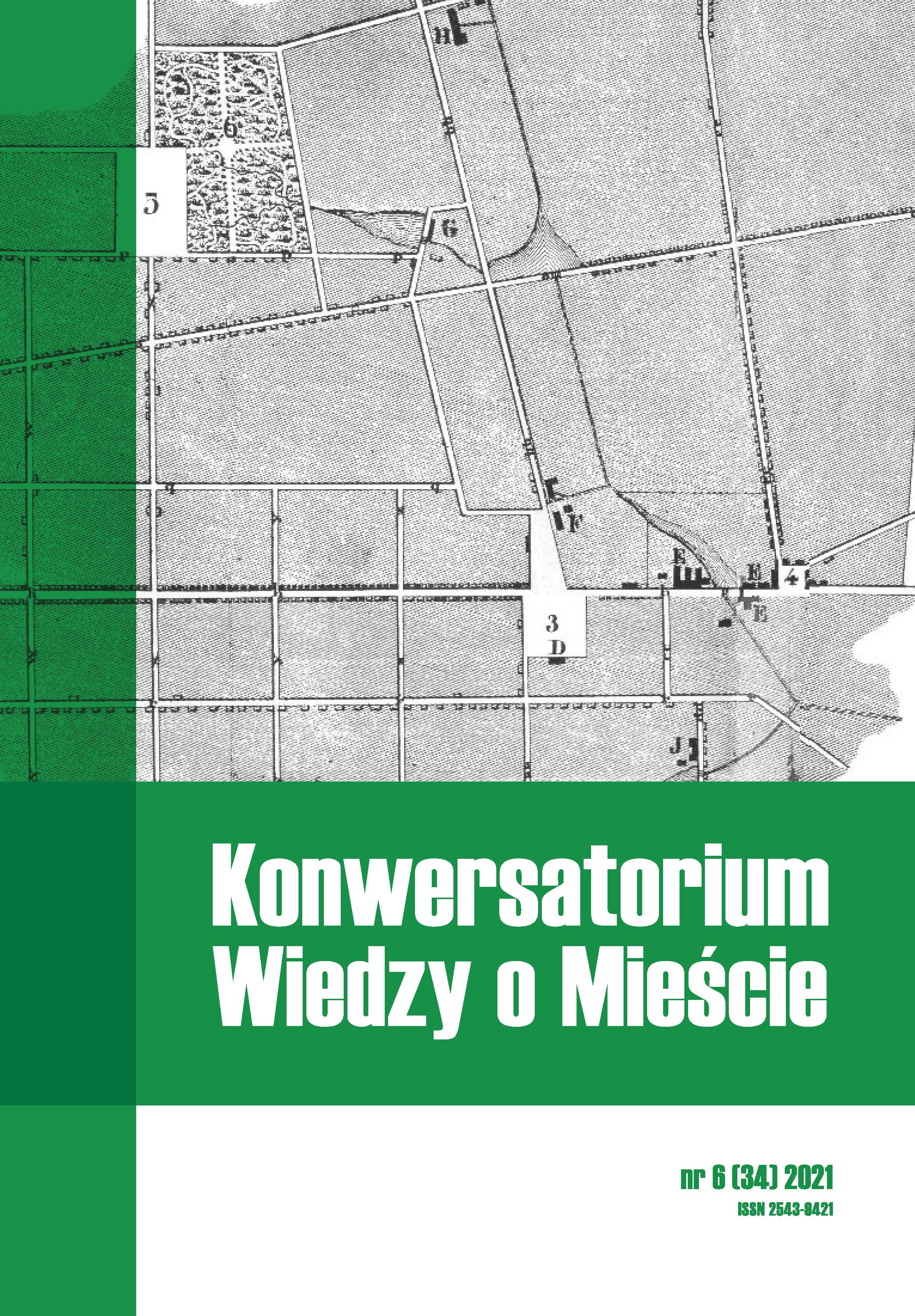Changes in fertility levels in Polish voievodship capitals: 1983–2020
DOI:
https://doi.org/10.18778/2543-9421.06.02Keywords:
ertility, total fertility, regional capitals, Poland, turn of the 21st c.Abstract
The turn of the 21st century has been a period of significant change in procreational behaviour in Poland and the aim of the article is to present the changes observed in regional capitals (of voievodships) in a broader context. The main tool used is the total fertility rate (TFR). The most important findings are those related to the observed similarity of the changes, but at the same time a fixed difference between ‘pioneers’ (the biggest cities) and ‘laggards’ (smaller cities located in the eastern part of Poland) is visible.
References
Bongaarts, J., Feeney, G. (1998). On the quantum and tempo of fertility. Population and Development Review, 24 (2), 271–291. https://doi.org/10.2307/2807974
Google Scholar
DOI: https://doi.org/10.2307/2807974
Dorbritz, J. (2003). Social, political and economic transformation. W: D. Philipov, J. Dorbritz, Demographic consequences of economic transition in countries of Central and Eastern Europe (s. 21–68). Strasbourg: Council of Europe.
Google Scholar
Frątczak, E., Ptak-Chmielewska, A. (1999). Formuła Bongaartsa–Feeneya – zastosowania dla Polski. Studia Demograficzne, 2 (136), 43–61.
Google Scholar
Garewicz, J. (1983). Pokolenie jako kategoria socjofilozoficzna. Studia Socjologiczne, 1, 75–87.
Google Scholar
Gołata, E. (2016). Estimation of fertility in Poland and of Polish born women in the United Kingdom. Studia Demograficzne, 1 (169), 13–38. https://doi.org/10.33119/SD.2016.1.1
Google Scholar
DOI: https://doi.org/10.33119/SD.2016.1.1
Holzer, J.Z. (2002). Demografia. Warszawa: Wydawnictwo Naukowe PWN.
Google Scholar
Holzer-Żelażewska, D., Tymicki, K., (2009). Cohort and period fertility of Polish women. Pobrane z: http://bazekon.icm.edu.pl/bazekon/element/bwmeta1.element.ekon-element-000171229191 (15.02.2021).
Google Scholar
Janiszewska, A. (2013). Zachowania matrymonialne i prokreacyjne w Polsce – ujęcie geograficzne. Łódź: Wydawnictwo Uniwersytetu Łódzkiego. https://doi.org/10.18778/7525-964-3
Google Scholar
DOI: https://doi.org/10.18778/7525-964-3
Jończy, R. (2014). Problem nierejestrowanej emigracji definitywnej (emigracji zawieszonej) w badaniu procesów społeczno-gospodarczych na obszarach wiejskich. Prace Naukowe Uniwersytetu Ekonomicznego we Wrocławiu / Research Papers of Wrocław University of Economics, 360, 11–18. https://doi.org/10.15611/pn.2014.360.01
Google Scholar
DOI: https://doi.org/10.15611/pn.2014.360.01
van de Kaa, D.J. (1987). Europe’s second demographic transition. Population Bulletin, 42 (1), 1–59.
Google Scholar
van de Kaa, D.J. (1996). Anchored narratives: The story and findings of half a century of research into the determinants of fertility. Population Studies. A Journal of Demography, 50 (3), 389–432. https://doi.org/10.1080/0032472031000149546
Google Scholar
DOI: https://doi.org/10.1080/0032472031000149546
Kohler, H.-P., Billari, F.C., Ortega, J.A. (2004). The emergence of lowest-low fertility in Europe during the 1990s. Population and Development Review, 28 (4), 641–680.
Google Scholar
DOI: https://doi.org/10.1111/j.1728-4457.2002.00641.x
Kotowska, I.E. (1998). Teoria drugiego przejścia demograficznego a przemiany demograficzne w Polsce w latach 1990. Studia Demograficzne, 4 (134), 3–36.
Google Scholar
Kotowska, I.E. (2014). Uwarunkowania zachowań prokreacyjnych. Pobrane z: http://www.diagnoza.com/pliki/raporty_tematyczne/Niska_dzietnosc_w_Polsce.pdf (15.02.2021).
Google Scholar
Krzysztofik, R. (red.) (2019). Przemiany demograficzne miast Polski. Wymiar krajowy, regionalny i lokalny. Pobrane z: https://irmir.pl/wp-content/uploads/2019/11/IRM_Przemianydemograficzne_2019-10-14_www.pdf (15.02.2021).
Google Scholar
Kurek, S., Lange, M. (2013). Zmiany zachowań prokreacyjnych w Polsce w ujęciu przestrzennym. Kraków: Wydawnictwo Uniwersytetu Pedagogicznego w Krakowie.
Google Scholar
Lutz, W., Skirbekk, V., Testa, M.R. (2006). The low fertility trap hypothesis. Forces that may lead to further postponement and fewer births in Europe. Vienna Yearbook of Population Research, 167–192. https://doi.org/10.1553/populationyearbook2006s167
Google Scholar
DOI: https://doi.org/10.1553/populationyearbook2006s167
Paradysz, J. (2017). Perspektywy rozwoju demograficznego województwa wielkopolskiego – wybrane konsekwencje ekonomiczne i społeczne. W: J. Hrynkiewicz, A. Potrykowska (red.), Sytuacja demograficzna Wielkopolski jako wyzwanie dla polityki społecznej i gospodarczej (s. 170–186). Warszawa: Rządowa Rada Ludnościowa.
Google Scholar
Podogrodzka, M. (2011). Przestrzenne zróżnicowanie płodności w Polsce. Pobrane z: http://cejsh.icm.edu.pl/cejsh/element/bwmeta1.element.desklight-93c18ecc-96ba-43c3-bcab-c3e39db0ed66 (15.02.2021).
Google Scholar
Rosset, E. (1975). Demografia Polski. T. 2: Reprodukcja ludności. Warszawa: Państwowe Wydawnictwo Naukowe.
Google Scholar
Rządowa Rada Ludnościowa (2020). Sytuacja demograficzna Polski – Raport 2019–2020. Pobrane z: https://bip.stat.gov.pl/organizacja-statystyki-publicznej/rzadowa-rada-ludnosciowa/publikacje-rzadowej-rady-ludnosciowej/raporty-sytuacja-demograficzna-polski/ (15.02.2021).
Google Scholar
Smoliński, Z. (1981). Dzietność rodzin. Stan aktualny i perspektywy. Pobrane z: https://repozytorium.amu.edu.pl/bitstream/10593/21128/1/012%20ZBIGNIEW%20SMOLI%C5%83SKI%20RPEiS%2043%283%29%2C%201981.pdf (15.02.2021).
Google Scholar
Szukalski, P. (2015a). Przemiany zachowań rozrodczych w województwie łódzkim. W: P. Szukalski (red.), Procesy demograficzne w województwie łódzkim w XXI w. (s. 33–57). Łódź: Wydawnictwo Uniwersytetu Łódzkiego.
Google Scholar
Szukalski, P. (2015b). Przestrzenne zróżnicowanie dzietności w Polsce. Pobrane z: https://ws.stat.gov.pl/Article/2015/4/013-027 (15.02.2021).
Google Scholar
Szukalski, P. (2019). Wzrost dzietności w ostatnich latach: dlaczego najbardziej z niego korzystają duże miasta? Pobrane z: http://hdl.handle.net/11089/29980 (15.02.2021).
Google Scholar
Szukalski, P. (2020). Obszary o najwyższej dzietności w Polsce w XXI wieku. Pobrane z: http://hdl.handle.net/11089/32186 (15.02.2021).
Google Scholar
Śleszyński, P. (2011). Oszacowanie rzeczywistej liczby ludności gmin województwa mazowieckiego z wykorzystaniem danych ZUS. Studia Demograficzne, 2, 35–58.
Google Scholar
Tymicki, K., Zeman, K., Holzer-Żelażewska, D. (2018). Cohort fertility of Polish women, 1945–2015: The context of postponement and recuperation. Studia Demograficzne, 2, 5–23. https://doi.org/10.33119/SD.2018.2.1
Google Scholar
DOI: https://doi.org/10.33119/SD.2018.2.1
Downloads
Published
How to Cite
Issue
Section
License

This work is licensed under a Creative Commons Attribution-NonCommercial-NoDerivatives 4.0 International License.









